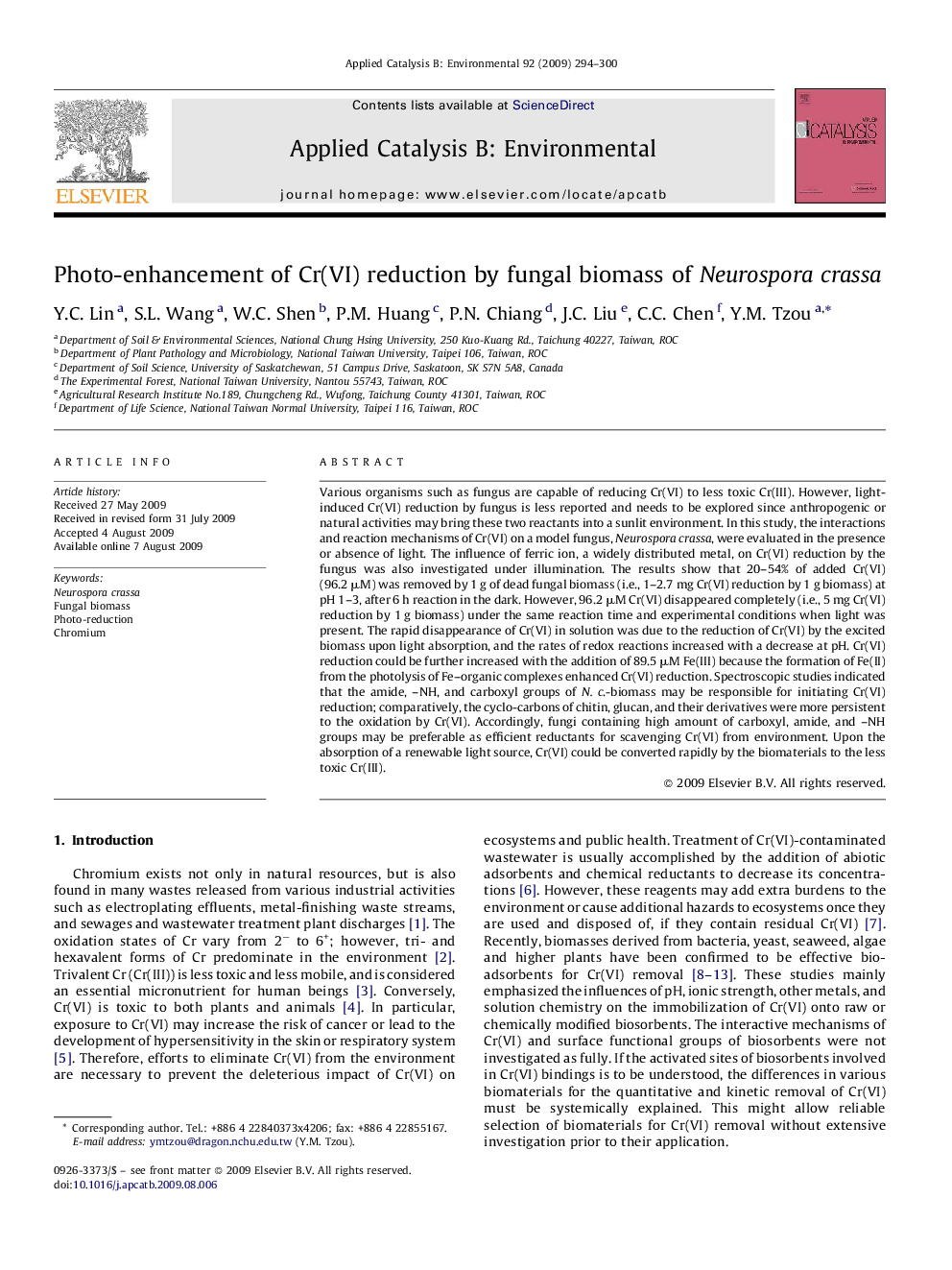| کد مقاله | کد نشریه | سال انتشار | مقاله انگلیسی | نسخه تمام متن |
|---|---|---|---|---|
| 47565 | 46476 | 2009 | 7 صفحه PDF | دانلود رایگان |

Various organisms such as fungus are capable of reducing Cr(VI) to less toxic Cr(III). However, light-induced Cr(VI) reduction by fungus is less reported and needs to be explored since anthropogenic or natural activities may bring these two reactants into a sunlit environment. In this study, the interactions and reaction mechanisms of Cr(VI) on a model fungus, Neurospora crassa, were evaluated in the presence or absence of light. The influence of ferric ion, a widely distributed metal, on Cr(VI) reduction by the fungus was also investigated under illumination. The results show that 20–54% of added Cr(VI) (96.2 μM) was removed by 1 g of dead fungal biomass (i.e., 1–2.7 mg Cr(VI) reduction by 1 g biomass) at pH 1–3, after 6 h reaction in the dark. However, 96.2 μM Cr(VI) disappeared completely (i.e., 5 mg Cr(VI) reduction by 1 g biomass) under the same reaction time and experimental conditions when light was present. The rapid disappearance of Cr(VI) in solution was due to the reduction of Cr(VI) by the excited biomass upon light absorption, and the rates of redox reactions increased with a decrease at pH. Cr(VI) reduction could be further increased with the addition of 89.5 μM Fe(III) because the formation of Fe(II) from the photolysis of Fe–organic complexes enhanced Cr(VI) reduction. Spectroscopic studies indicated that the amide, NH, and carboxyl groups of N. c.-biomass may be responsible for initiating Cr(VI) reduction; comparatively, the cyclo-carbons of chitin, glucan, and their derivatives were more persistent to the oxidation by Cr(VI). Accordingly, fungi containing high amount of carboxyl, amide, and NH groups may be preferable as efficient reductants for scavenging Cr(VI) from environment. Upon the absorption of a renewable light source, Cr(VI) could be converted rapidly by the biomaterials to the less toxic Cr(III).
Journal: Applied Catalysis B: Environmental - Volume 92, Issues 3–4, 9 November 2009, Pages 294–300